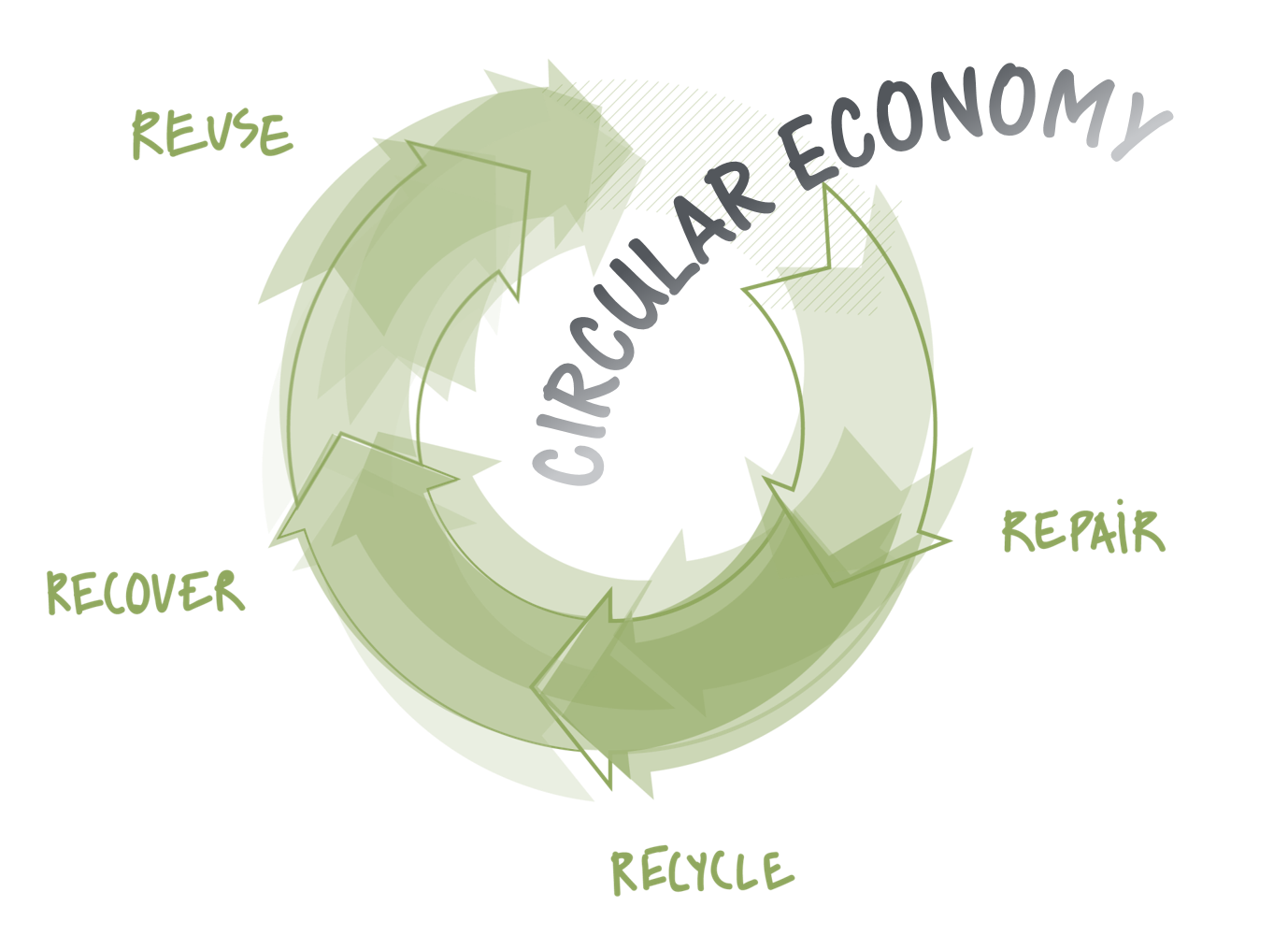A Circular Economy is not just about saving resources but also about sustainable relationships. Facts have shown that one ton of solid waste recycling pays $101 more in salaries than being disposed of in landfills. This blog will help readers in understanding the concept of circular economy, its importance, and its benefits for the environment and economic growth.

Circular Economy Overview:
An economic system tackling global challenges including climate change, loss of biodiversity, waste, and pollution is considered a circular economy or circularity.
By design, this economy is invigorating and recovering. In overall system health, economic activity builds and rebuilds in a circular economy. This concept of circular economy highlights the importance of an economy ineffective working at all levels i.e., small and big scale businesses as well as organizations and individual working levels.
Principles of Circular Economy:
It is based on the principles of designing out waste as well as pollution whereas keeping materials and products in use.
- Design out waste and pollution
- Retain materials and products in use
- Regenerate natural systems
What does Circular Economy do?
A circular economy improves the efficiency of resources by keeping products, materials, equipment, and infrastructure in use for a longer period.
Circular economy not only made modifications in reducing negative linear economic impacts but also signifies a systematic shift in building long-term flexibility, produces business and economic opportunities, and offers many social and environmental benefits.
Why Shift to a Circular Economy?
The population of the world is growing and so is the demand for raw materials but the crucial raw material supply is limited. As a result of this, many developing countries are dependent on others for raw materials.
Moreover, the extraction of raw materials also impacts negatively the environment in terms of CO2 emission and energy consumption. A circular economy provides the smarter use of raw materials hence lowering environmental emissions and making a sound economy.
It’s time to Rethink!
A circular economy allows rethinking and redesigning our ways of making things and stuff. It explores the idea of powering the system along with renewable energy by designing products that can be made and remade resulting in a sound economy. It answers the question that whether creativity and innovation help in building a restorative economy.
What Benefits it give?
A circular economy does provide operational along with strategic benefits and brings the potential for value creation within spheres of economy, business, environment, and society.
- Fewer Greenhouse Gas Emissions:
A circular economy helps reduce greenhouse gases as it utilizes renewable energy which is less polluting compared to fossil fuels. Moreover, fewer materials and production processes are involved in this providing sound and functional products.
- Healthy and Resilient Soils:
In the farming system, the principles of the circular economy make sure the return of important nutrients to the soil through composting. This process reduces the exploitation of soil and the natural ecosystem. The organic waste is returned to the soil making the soil healthier allowing a natural balance in the ecosystem.
It must be noted that soil degradation costs $40 billion annually worldwide and contains hidden costs in form of the use of fertilizers, biodiversity, and landscape loss. The use of a circular economy proves to be useful in tackling these issues.
In Europe's food systems, a circular economy has significantly reduced 80% the usage of fertilizers contributing to the natural balance of the soil.
- Reduced Negative Externalities and Economic Growth:
The negative externalities including soil, water, air pollution, and land use are better managed by following the principles of the circular economy.
There will be an increase in the revenues from circular activities following the increased GDPs.

